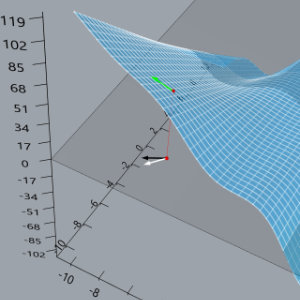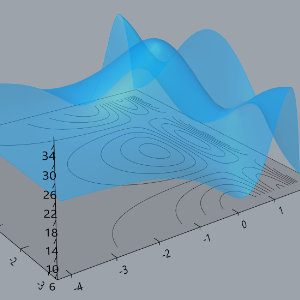This page is under construction : )
Seifert--Weber dodecahedral space, icosahedral manifold




Thurston's tetrahedral arrangement of the figure-8 decomposition
In Three-Dimensional Geometry and Topology, Thurston describes another way to construct the decomposition of the figure-8 knot complement from above. First we draw the figure-8 knot so that it sort of looks like a tetrahedron, then add faces. This is described on pages 40-43 of the book referred to. Here are some 3D models of what Thurston is describing.




Polyhedral decomposition of the figure-8 knot complement
A knot is an embedding of a circle in 3-dimensional space (or in the 3-sphere). Intuitively, you can think of a knot as a tangled up extension cord, with the ends plugged together. It is often useful to study knots by understanding the space around the knot (not including the knot itself). To study the space around the knot, it is useful to break it up into simple polyhedral pieces. There is a recipe that gives a way to decompose the space around any knot into polyhedra, first demonstrated by Thurston in his 1979 notes for the figure-8 knot. A good source for details is the first chapter of Purcell's book Hyperbolic Knot Theory (also available on arXiv). The 3D models below demonstrate Thurston's decomposition.








GH Calculus Tools
Some tools for visualizing multi-variable calculus concepts, programmed in Rhino3D/Grasshopper. Files are on GitHub here.
The main tool is surface_plotter.gh, which is an interactive 3D graphing calculator that has features that were added in the course of teaching a multi-variable calculus course to visualize things like cross-sections of surfaces, partial and directional derivatives, contour plots, gradients, etc. The other files include tools for visualizing quadric surfaces and parametric curves (and concepts surrounding them).
Using these files of course requires Rhinocerous, which is a closed-source 3D modelling program. These tools were developed for my own use, but I hope others will be able to make use of them as well. It is unfortunate, but unavoidable, that Rhino is not free, so there is a built in barrier here for access. However, Rhino offers a 90-day trial (and reduced pricing for educators), so that is an option to consider if you want to try this out.







